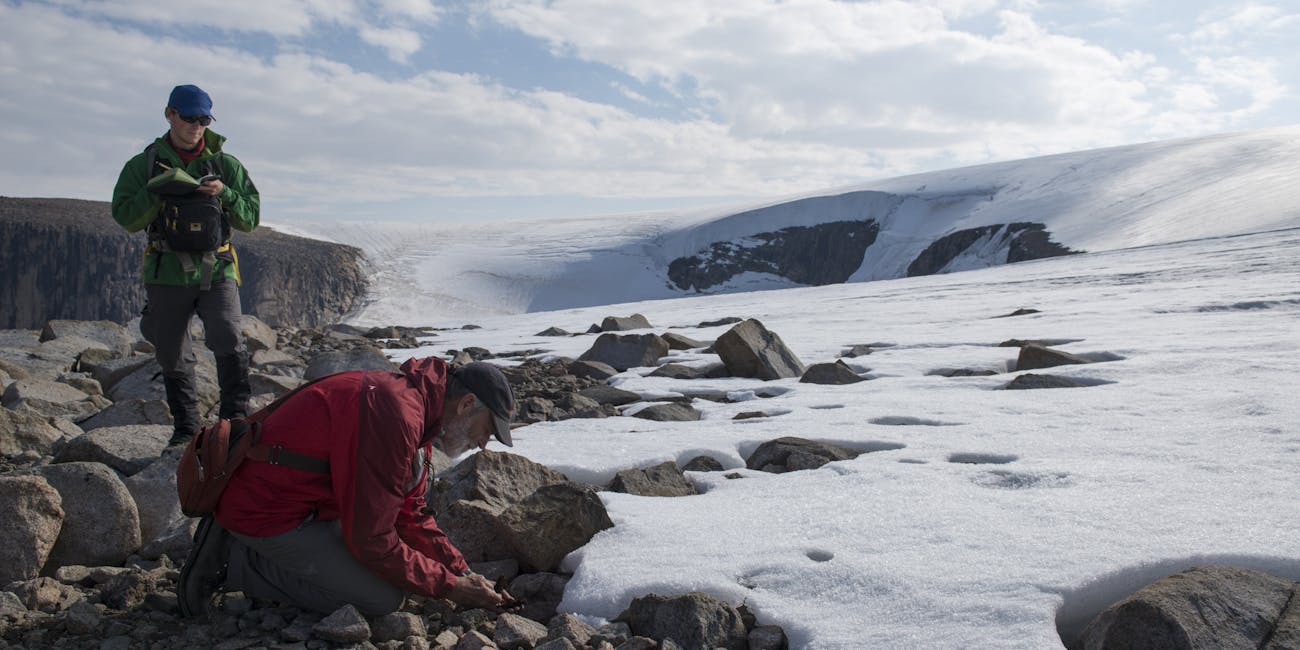
Baffin Island is the fifth-largest island in the world and a bitterly cold slice of Canadian territory above the Arctic Circle. But things are heating up in Baffin. The Arctic is warming two to three times faster than the rest of the planet, and in turn, the island’s glaciers are receding, revealing something humans haven’t seen before: A landscape that’s been covered in ice for the last 40,000 years. The last time the landscape saw the sun was the middle of the last glacial period when temperatures on average were colder than they are today. Neanderthals had just died out, and humans had just begun to hunt woolly mammoths. Meanwhile, on Baffin Island, ice spread and covered ancient plants, entombing them in the cold. Now, those plants are exposed once more, millennia later. A study released last week in the journal Nature Communications explores the historic melting. Simon Pendleton, the lead author of the study, and a PhD student at the University of Colorado, Boulder, tells Inverse that the exposed landscapes look like the surrounding tundra landscape — boulders strewn with “pockets of life in them”, as well as mosses and lichen that have begun to recolonize the landscape. For the most part, they still look barren.“Knowing that these landscapes haven’t seen the light of day in at least the past 40,000 years does leave one with a profound sense of awe,” Pendleton says.

These archaic mosses and lichens have sat in high-elevation, low-relief plateaus separated by fjords. In August, the team behind the study went to the island and collected 48 plant samples from 30 different Baffin ice caps in order to get a sense of when the ice last advanced over that location. While it’s clear that the Arctic is warming because of human-induced climate change, the last time that the Arctic was as warm as it is today is still a topic of debate. The team’s research indicates that Baffin’s glaciers haven’t retreated to the size they are today since 40,000 years ago. That date emerged from the radiocarbon dating of the rooted plants which are still in their original growth position as well as sampled quarts from each site that were collected to further establish age. Furthermore, the examination of Baffin and Greenland ice cores indicates that temperatures now represent the warmest century for the region in the past 115,000 years. Pendleton says that, accordingly, this means that the “human impact on the modern climate is unprecedented over the past 115,000 years as well.” If things continue as they are, Baffin could be ice-free within the next few centuries. Pendleton and his colleagues believe that, because preserved tundra landscapes are archives of past glacier activity, these pockets can help us understand how this region has responded to climate change in the past, which can help us contextualize the magnitude of the current situation. After all, melting glaciers mean sea level rise; a dramatic change that will affect lives far beyond the Arctic.